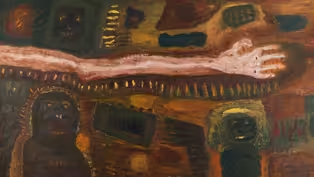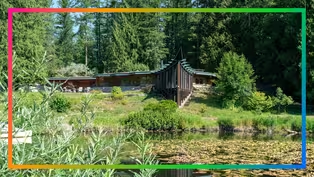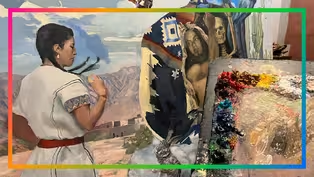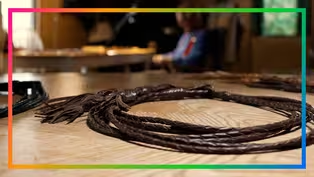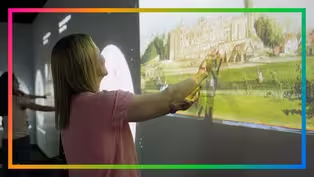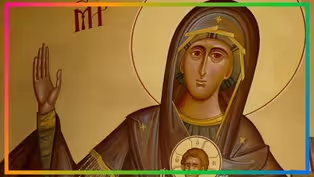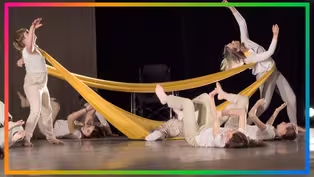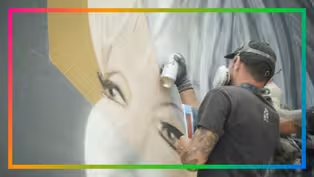
Love Wins, Hate Loses
Season 1 Episode 3 | 6m 2sVideo has Closed Captions
When the voices for hate get loud, the voices (and paint brushes) for love get louder.
Watch as a mural artist invites the community to help her transform a tunnel of hate into a tunnel of love. The City of Boise could have covered over the swastikas that were graffitied on the wall of a tunnel leading to the nation’s only memorial to Anne Frank. What they did instead was make a statement about hope and belonging to help a community heal.
Problems playing video? | Closed Captioning Feedback
Problems playing video? | Closed Captioning Feedback
createid is a local public television program presented by IdahoPTV
The Friends of Idaho Public Television

Love Wins, Hate Loses
Season 1 Episode 3 | 6m 2sVideo has Closed Captions
Watch as a mural artist invites the community to help her transform a tunnel of hate into a tunnel of love. The City of Boise could have covered over the swastikas that were graffitied on the wall of a tunnel leading to the nation’s only memorial to Anne Frank. What they did instead was make a statement about hope and belonging to help a community heal.
Problems playing video? | Closed Captioning Feedback
How to Watch createid
createid is available to stream on pbs.org and the free PBS App, available on iPhone, Apple TV, Android TV, Android smartphones, Amazon Fire TV, Amazon Fire Tablet, Roku, Samsung Smart TV, and Vizio.
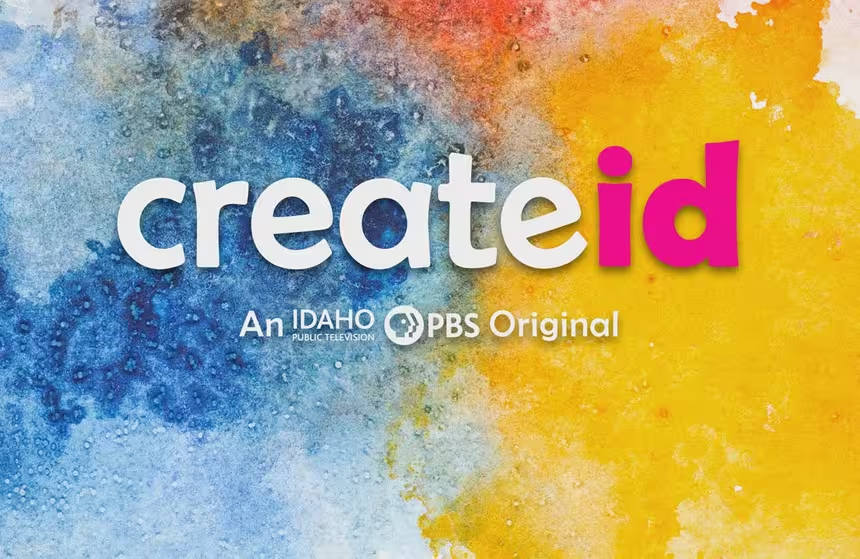
createid on YouTube
createid celebrates the unique talents of Idaho creators through lively video pieces. See exclusive content and join the community on Facebook, Instagram and YouTube. Subscribe now!Providing Support for PBS.org
Learn Moreabout PBS online sponsorshipMore from This Collection
createid
SARA: A Life in Dreams and Symbols
Video has Closed Captions
An illuminating look at the life and work of Idaho artist Sara Joyce. (30m 47s)
Video has Closed Captions
Unicorn Farm is a one-of-a-kind home in northern Idaho. (7m 50s)
Video has Closed Captions
Painter Lupe Galván melds his indigenous heritage with his love of European painting. (6m 56s)
Video has Closed Captions
Watch as Idaho leather braider Mike “Hooey” Storch crafts a traditional hat band. (5m 43s)
Video has Closed Captions
Step inside the immersive, touchscreen environment of the Stein Luminary. (4m 51s)
Video has Closed Captions
An ancient art form uplifts an historic Greek Orthodox Church in Pocatello, Idaho. (8m 1s)
Flipping the Script: Open Arms Dance Project
Video has Closed Captions
A profile of the Open Arms Dance Project, an inclusive, multi-generational dance company. (7m 48s)
Providing Support for PBS.org
Learn Moreabout PBS online sponsorship[Music] Reporters: “Boise Police are investigating hateful...” “...antisemitic graffiti is discovered over the weekend...” “...began cleaning up the vandalism...” “...near the only Anne Frank memorial in the country.” [Music] Dan Prinzing: It's almost as if my own personal home was violated.
And if this space is violated, it draws us together to protect it.
[Music] I am Addie Boswell.
I am a muralist and writer based out of Portland, Oregon.
I think we should still put, where those leaves are, some really light-colored leaves... Boswell: So the Wassmuth Center being a part of it was huge for me.
And as soon as I read the article, I went back and read “The Diary of Anne Frank” and just got caught up in everything they do here.
And it just spoke to me in so many ways.
Stephanie Johnson: The committee was really drawn to Addie’s proposal because it had that element of community engagement.
We wanted to instill a sense of hope and belonging in the mural.
What does it mean to be Boisean?
And what does it mean to feel seen?
Boswell: So I started with real heroes of Boise that stood up to injustice in various ways, and kind of based my whole composition around these figures spread throughout, and then started weaving in all the other details behind that.
Prinzing: There is such wonderful synergy between art and human rights, because art can draw you in.
Art can create a conversation.
Art can express.
But it's also subject to interpretation.
Johnson: The committee's hope for this mural was that it would kind of take back that space, and shine light into a previously blank, dark tunnel.
Boswell: Just getting art on otherwise blank walls or graffitied walls just, of course, uplifts the space.
There's not many things we can do where we're all working together towards a shared goal.
And then when you add like a creative goal on top of it, it just, like, adds some sort of magic to it.
Yeah, yeah, yeah.
No, what you're doing is awesome; I love it.
Johnson: The fact that Addie was open to passersby, you know, as they kind of come hang out and watch what's going on, to just say, “Hey, do you want to paint?
Do you want to come paint for a little bit?” It's created this really just spontaneous energy.
Boswell: Yeah, well I’ve got the climate...
I think of myself as the choreographer of the art, but not the, you know, not the main artist.
We've had tons of volunteers, some from the houseless community, some from the interfaith community, some from the refugee community.
And like, you know, that it’s just like expanding this vision we have, which is like, we serve, we serve everybody.
Now everybody is also painting it.
So that's, that's great.
Just makes it richer.
You are all wonderful.
Thank you.
Johnson: I think the goals and the mission of our public art program really exemplify the city's desire to create a city for everyone.
And public art just inherently does that.
And I think that this is a really cool example of how that's done.
Boswell: There's something beautiful happening here that really doesn't happen very often.
Some of us paint and some of us broadcast, and some of us legislate, but just, like, realizing we're all kind of together working toward this common goal.
And I really feel that in Boise, that everybody's kind of got that same vision, you know.
Prinzing: As she said, this is not just her mural, it's ours.
It belongs to all of us, as we've always said with the memorial.
The memorial is all of ours.
[Music fades] Prinzing: To think in terms that what had been done in the shadow of night, and now what has been brought out into the light so much in the hope that anyone can step into the space and find themselves here.
And that when there is so much hate that is expressed, or literally, scrawled onto the walls, that the voices of good have to get louder.
And I think that's what we're seeing here.
It's pretty overwhelming.
What I'm hoping now is that it sparks conversation.
That when we begin to discover symbols that maybe I don't know.
That there are pieces that, “Well, what is this?” That that's what sparks the conversation.
And to me, that's what art should do, is spark that conversation.
[Music]
Video has Closed Captions
Clip: S1 Ep3 | 1m 57s | Boise-based aerosol artist Hawk Sahlein shares his work and artistic philosophy. (1m 57s)
Providing Support for PBS.org
Learn Moreabout PBS online sponsorshipSupport for PBS provided by:
createid is a local public television program presented by IdahoPTV
The Friends of Idaho Public Television
